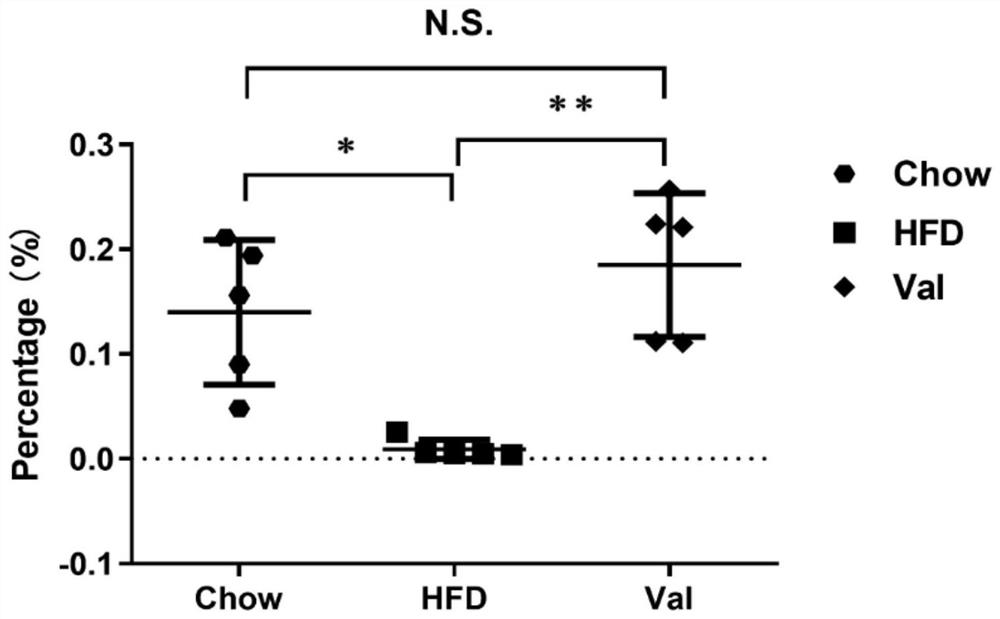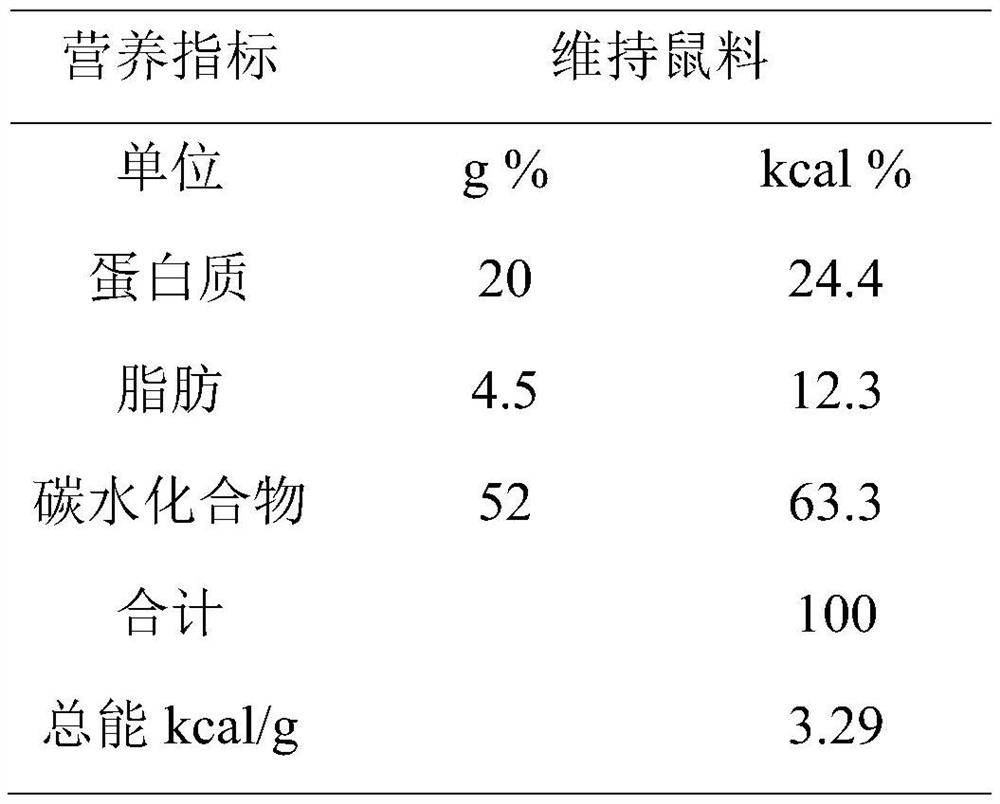Composition for preventing reduction of abundance of Akkermansia muciniphila in intestinal tract
A composition and intestinal technology, applied in the field of general health and regulation of intestinal microorganisms, can solve problems such as poor specificity, obesity and other diseases, and achieve the effects of preventing abundance reduction, facilitating promotion and high safety.
- Summary
- Abstract
- Description
- Claims
- Application Information
AI Technical Summary
Problems solved by technology
Method used
Image
Examples
Embodiment 1
[0033] Fifteen male 8-week-old c57 mice (purchased from Beijing Weitong Lihua Experimental Animal Technology Co., Ltd.) were selected for the experiment and divided into 3 groups with 5 mice in each group. Group A was the control group and fed with common food (Chow). Purchased from Beijing Weitong Lihua Experimental Animal Technology Co., Ltd., the formula is shown in Table 1; Group B is a high-fat diet feeding model group (HFD), using high-fat feed containing 60kcal% (purchased from Research Diets, item number D12492), Research Diets D12492 60kcal% high-fat feed is generally used as a standard feed for studying obesity and metabolic syndrome. C group adopts containing 60kcal% high-fat diet, and gives the L-valine (V0500 Sigma-AldrichL-valine L-Valine reagent grade, purity ≥ 98%) of 1.5g / kg mouse body weight in drinking water every day, The above-mentioned L-valine powder was dissolved in drinking water and fed to mice. After 16 weeks, mouse feces were collected with sterile...
Embodiment approach 1
[0041] Embodiment 1: oral liquid with L-valine as the active ingredient;
[0042] Taking oral liquid as an example, oral liquid is a new dosage form developed on the basis of decoction and injection. It has the advantages of small dose, fast absorption, stable quality, convenient carrying and taking, and easy storage. It contains a variety of active ingredients. Makes a big difference in quality and taste. Without changing the structure and function of the main active ingredients, how to retain the active ingredients to the greatest extent and improve the taste is a difficult point in the selection of excipients. Adding excipients in oral liquid can improve taste, clarity, stability and product quality.
[0043] Commonly used excipients for oral liquids include: solvents, fragrances, flavoring agents, clarifiers, preservatives, etc. These excipients can be added at the same time, or one of them can be added. Among them, the solvent must be added, and water can be used. Diffe...
Embodiment approach 2
[0049] Embodiment 2: Tablets with L-valine as the active ingredient;
[0050] Tablet has the advantages of accurate dosage, stable quality, convenient taking, carrying and transportation.
[0051] For tablets, the preparation auxiliary materials include one or more of diluents, binders, lubricants and disintegrants, preferably a combination of diluents, binders, lubricants and disintegrants.
[0052] For tablets, preferably, the diluent is one or more of cellulose and inorganic salts. Such as microcrystalline cellulose, calcium sulfate, calcium hydrogen phosphate, pharmaceutical calcium carbonate, mannitol, etc., to increase the volume of raw materials to help shape them.
[0053] For tablets, preferably, the binder is one of water, ethanol, sodium carboxymethylcellulose, hydroxypropylcellulose, methylcellulose, ethylcellulose, gelatin and polyvinylpyrrolidone, etc. or more.
[0054] For tablets, preferably, the lubricant is one or more of magnesium stearate, micronized sil...
PUM
 Login to View More
Login to View More Abstract
Description
Claims
Application Information
 Login to View More
Login to View More - R&D
- Intellectual Property
- Life Sciences
- Materials
- Tech Scout
- Unparalleled Data Quality
- Higher Quality Content
- 60% Fewer Hallucinations
Browse by: Latest US Patents, China's latest patents, Technical Efficacy Thesaurus, Application Domain, Technology Topic, Popular Technical Reports.
© 2025 PatSnap. All rights reserved.Legal|Privacy policy|Modern Slavery Act Transparency Statement|Sitemap|About US| Contact US: help@patsnap.com



